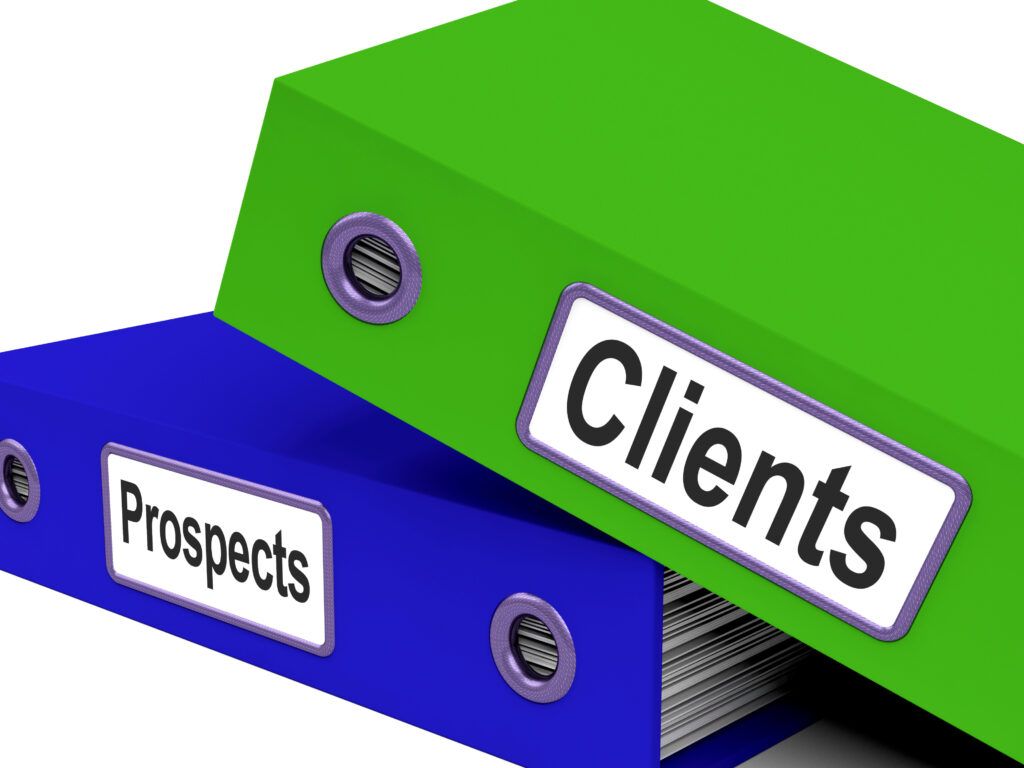-
 Published: Mar 29, 2023
Published: Mar 29, 2023
-
 9 min. read
9 min. read
-
 Sina Mchunu
Sina Mchunu Research & Tech Content Writer
Research & Tech Content Writer
- Sina is a marketing expert who specializes in SEO, AI, and digital marketing content. With over five years of experience, she’s written hundreds of pieces, spanning a variety of topics and industry niches. She loves combining her strong eye for detail and passion for storytelling in her work. You’ll find her fruit picking or horse riding at the local farm when she’s not writing.
Are you noticing that your leads are not converting fast enough? A lead scoring model is just what you need to review the quality of the leads you are generating and ensure they align with your target audience.
Lead scoring is the best way for sales and marketing teams to rank and prioritize their potential customers by assigning numerical values based on their level of engagement with and interest in the company’s products or services.
This article will cover the fundamentals of lead scoring, lead scoring models, and how to score leads for your business. Here’s a brief outline of what we’ll discuss:
- What is lead scoring?
- Why you need lead scoring for your business
- 3 types of lead scoring models
- How to set lead scoring standards
- How to score leads for your business
- Best practices for scoring leads
Read on to learn more!
Don’t miss our Marketing Manager Insider emails!
Join 200,000 smart marketers and get the month’s hottest marketing news and insights delivered straight to your inbox!
Enter your email below:
Inline Subscription Form – CTA 72
“*” indicates required fields
(Don’t worry, we’ll never share your information!)

What is lead scoring?
Lead scoring is a methodology that sales and marketing teams use to rank prospects against a scale representing each lead’s perceived value to the organization. It helps businesses prioritize leads and focus their efforts on those with the highest potential for conversion.
Why do you need lead scoring for your business?
Lead scoring is essential for your business because it helps your sales team prioritize their leads and focus on those most likely to convert into paying customers. By assigning scores based on a lead’s behavior and engagement with the company, you can better allocate your business resources and increase your success rate.
Scoring leads provides insights into which tactics are most effective in attracting and engaging potential customers, helping your team identify areas for improvement in their marketing and sales strategies. Also, your sales and marketing departments can use these insights to refine and optimize future campaigns, leading to greater success and growth for the business.
3 primary types of lead scoring models
The three types of lead scoring models are:
1. Demographic
The demographic model score leads based on characteristics such as job title or company size. This type of scoring helps your team identify their ideal customer profile (ICP) and target their marketing efforts towards those most likely to convert into paying customers.
Additionally, a demographic lead scoring model can also assist in creating personalized marketing campaigns that resonate with specific groups of potential customers.
For example, a demographic model can help identify a target audience’s age range, income level, and interests. It allows your marketers to tailor their messaging and promotions to better appeal to that group and increase the likelihood of conversion.
2. Behavioral
The behavioral model score leads based on their actions and engagement with a company’s marketing campaigns, website, and social media channels. This model provides insights that help your team better understand the interests and needs of potential customers, allowing them to optimize their sales funnel and improve overall conversion rates.
By analyzing customer behavior and preferences, a behavioral lead scoring model can identify areas where your team can improve customer engagement and satisfaction. With these insights, your team can make data-driven decisions to enhance the customer experience and increase loyalty.
3. Predictive
The predictive lead scoring model is based on historical data and machine learning algorithms that analyze factors such as lead demographic profiles, activity, and engagement to predict the likelihood of a lead converting into a customer.
The predictive lead scoring model analyzes data from various sources, such as website activity, email engagement, and social media interactions, to identify the most promising leads. It then assigns a score to each lead based on their potential to convert into a customer, allowing sales teams to prioritize their efforts accordingly.
Our digital marketing campaigns impact the metrics that improve your bottom line.
See More Results
WebFX has driven the following results for clients:
$6 billion
In client revenue
24 million
Leads for our clients
7.14 million
Client phone calls
How to set lead scoring standards
Here’s how you can set lead scoring standards in four steps:
- Consult with the sales and marketing teams
- Define the criteria for cold, warm, and hot leads using data analysis
- Assign numerical values to each criteria
- Regularly monitor and adjust your lead scoring standards
1. Consult with the sales and marketing teams

The first step to setting lead scoring standards is to talk to the sales and marketing teams to find out what characteristics they noticed that all leads who converted before had in common.
This will help identify the key attributes most likely to lead to a successful conversion. Once you identify these attributes, you can use them to create a scoring system that prioritizes leads based on their potential to convert.
2. Define the criteria for cold, warm, and hot leads using data analysis

Using the information and statistics from your sales and marketing teams, start defining the criteria that determine a cold, warm, and hot lead. That includes demographic information, engagement level, and buying patterns. Also, consider incorporating lead behavior data from your website and other digital channels to refine the scoring system further.
3. Assign numerical values to each criteria
Now that you’ve established the criteria to determine cold, warm, and hot leads, you can start assigning numeric values to each one. Scores can range from “zero” for leads that do not meet the criteria to “10” for leads that meet all of them.
For example, you can establish that if a lead scores 0–4, then it’s a cold lead, 4–7 for a warm lead, and 8–10 for a hot lead. This will help prioritize leads and focus your sales team’s efforts on the most promising prospects.
4. Regularly monitor and adjust your lead scoring standards

Now that you’ve set lead scoring standards, you must continuously monitor and adjust them based on their effectiveness. This involves analyzing the data regularly to ensure that the scoring standards accurately predict which leads are most likely to convert and make adjustments as necessary to improve their accuracy. It’s essential to align marketing and sales teams in this process to maximize effectiveness.
Measuring the metrics that affect your bottom line.
Are you interested in custom reporting that is specific to your unique business needs? Powered by MarketingCloudFX, WebFX creates custom reports based on the metrics that matter most to your company.
- Leads
- Transactions
- Calls
- Revenue


How to score leads for your business
- Set your lead scoring criteria
- Calculate the overall lead conversion rate
- Create attributes from converted leads
- Determine the value of each attribute
- Compare attributes’ values and assign numerical points
1. Set your lead scoring criteria
The first step in lead scoring is establishing your lead scoring criteria, which will help you zero in on the qualities of leads most predictive of successful outcomes. Setting lead scoring criteria considers factors such as demographics, firmographics, online behavior, and engagement with your company’s content — allowing you to compare values and assign points based on the level of importance for each attribute.
Additionally, you can use the attributes of your converted customers to refine your lead scoring criteria and improve the accuracy of your predictions.
2. Calculate the overall lead conversion rate

The second step is to calculate the conversion rate for all leads. Doing so will give you a baseline understanding of how many leads turn into customers. The formula for calculating the conversion rate is to divide the number of converted leads by the total number of leads and then multiply the result by 100 to get a percentage.
For example, if you had 100 leads and 20 became customers, your conversion rate would be 20%.

Once you have this information, you can start analyzing which lead sources to generate the most conversions and adjust your marketing strategy accordingly.
3. Create attributes from converted leads
You can now begin creating attributes based on the actions and characteristics of your present clientele by combining the implicit and explicit data at your disposal. For example, you can identify customers who are likely to purchase a particular product based on their industry, company size, or past engagement with your content — such as registering for a free trial or downloading a whitepaper.
The best way to choose your attributes is to look at consumer feedback, statistics, or the opinions of your sales staff. By creating attributes from converted leads, you can better target your marketing efforts and increase your chances of converting more leads into customers. It’s essential to regularly review and update your chosen traits based on new data and feedback to ensure their effectiveness.
4. Determine the value of each attribute
Most marketers employ demographic and behavioral scoring since each attribute or action a lead has determines your internal team’s subsequent actions. This approach helps calculate each attribute’s scoring by analyzing how many qualified leads become customers based on their demographics or behavior, which can further assist in optimizing the lead scoring process. This information can also help identify which attributes are most valuable for converting leads into customers.
The point value should increase proportionally to the likelihood that the corresponding action or characteristic will result in a conversion. If you analyze your website and marketing data or generate an attribution report, you can put a value on each of these factors and see how they impact your sales pipeline.
For instance, a lead who signs up for a free trial is more valuable than one who downloads a whitepaper. When determining which pieces of material are most effective, your sales staff can also shed some light.
5. Compare attributes’ values and assign numerical points
Once you’ve determined the value for each attribution and action, you should evaluate the results against your conversion rates. A higher rate of occurrence for a given attribute than the baseline rate is a good indicator that you should factor into your lead score.
For example, if you find that leads who engage with your website for more than 5 minutes are twice as likely to convert, you may assign two points to that attribute in your lead scoring system. However, it’s essential to regularly review and adjust your lead scoring model, as conversion rates and customer behavior can change over time.
37% of marketers say that generating high-quality leads was one of their biggest challenges.
We want to decrease that percentage.
WebFX can help you generate high-quality leads with a customized marketing strategy.
Learn More About Lead Generation Services

Generate sales-ready leads with WebFX
Now that you know how to score leads, you can improve your company’s ability to target qualified leads and increase conversions. Lead scoring is a powerful tool for learning about your target audience and identifying conversion triggers.
Want to partner with a lead generation agency instead? At WebFX, we are well-versed in generating sales-ready leads for companies like yours. We have generated more than 24 million leads so far. We’re here to assist you in developing a scoring system that will provide optimal outcomes for your company.
Contact us online or call 888-601-5359 to discuss our lead generation services with a strategist.
-
 Sina is a marketing expert who specializes in SEO, AI, and digital marketing content. With over five years of experience, she’s written hundreds of pieces, spanning a variety of topics and industry niches. She loves combining her strong eye for detail and passion for storytelling in her work. You’ll find her fruit picking or horse riding at the local farm when she’s not writing.
Sina is a marketing expert who specializes in SEO, AI, and digital marketing content. With over five years of experience, she’s written hundreds of pieces, spanning a variety of topics and industry niches. She loves combining her strong eye for detail and passion for storytelling in her work. You’ll find her fruit picking or horse riding at the local farm when she’s not writing. -

WebFX is a full-service marketing agency with 1,100+ client reviews and a 4.9-star rating on Clutch! Find out how our expert team and revenue-accelerating tech can drive results for you! Learn more
Try our free Marketing Calculator
Craft a tailored online marketing strategy! Utilize our free Internet marketing calculator for a custom plan based on your location, reach, timeframe, and budget.
Plan Your Marketing Budget
Table of Contents
- What is Lead Scoring?
- Why Do You Need Lead Scoring for Your Business?
- 3 Primary Types of Lead Scoring Models
- 1. Demographic
- 2. Behavioral
- 3. Predictive
- How to Set Lead Scoring Standards
- 1. Consult with the Sales and Marketing Teams
- 2. Define the Criteria for Cold, Warm, and Hot Leads Using Data Analysis
- 3. Assign Numerical Values to Each Criteria
- 4. Regularly Monitor and Adjust Your Lead Scoring Standards
- How to Score Leads for Your Business
- 1. Set Your Lead Scoring Criteria
- 2. Calculate the Overall Lead Conversion Rate
- 3. Create Attributes from Converted Leads
- 4. Determine the Value of Each Attribute
- 5. Compare Attributes’ Values and Assign Numerical Points
- Generate Sales-ready Leads with WebFX

Maximize Your Marketing ROI
Claim your free eBook packed with proven strategies to boost your marketing efforts.
Get the GuideTry our free Marketing Calculator
Craft a tailored online marketing strategy! Utilize our free Internet marketing calculator for a custom plan based on your location, reach, timeframe, and budget.
Plan Your Marketing Budget





